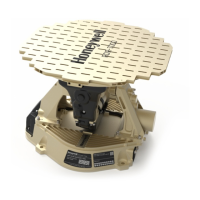IntuVueRDR-7000 Weather Radar Pilot's Guide
Simplified Operating Procedures D201911000094
12 Rev 0, Feb 2020
TAKEOFF AND DEPARTURE
Mode: WX ALL or WX PATH
Turbulence: On
Hazard (if provided): On
REACT: On
PWS(if provided): On
Gain: AUTO or as required to assess threats. (Refer to GAIN
CONTROLon page 31 for more details.)
Range: Pilot Flying – 10 to 40 nm, other side at least one range
higher.
Avoid any magenta turbulence cells and monitor the display for
weather intensity to avoid any weather threats.
Avoid any cells associated with Hail or Lightning Icons (see
page 21).
In areas where the REACT field is shown, expect the possibility of
weather that may have to be avoided.
If there is weather in the area, ensure that the radar has been
turned on in time to allow pilot(s) to evaluate any threats prior to
takeoff.
See PLANNING A PATH on page48 for more information.
CLIMB UP TO FL200
Mode: WX ALL or WX PATH
Turbulence: On
Hazard (if provided): On
REACT: On
Gain: AUTO or as required to assess threats. (Refer to GAIN
CONTROLon page 31for more details.)
Range: Pilot Flying – 10 to 40 nm, other side at least one range
higher.
Avoid any magenta turbulence cells and monitor the display for
weather intensity to avoid any weather threats.
Avoid any cells associated with Hail or Lightning Icons (see
page 21).
In areas where the REACT field is shown, expect the possibility of
weather that may have to be avoided.
See PLANNING A PATH on page 48 for more information.

